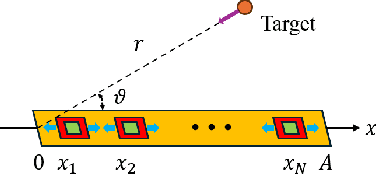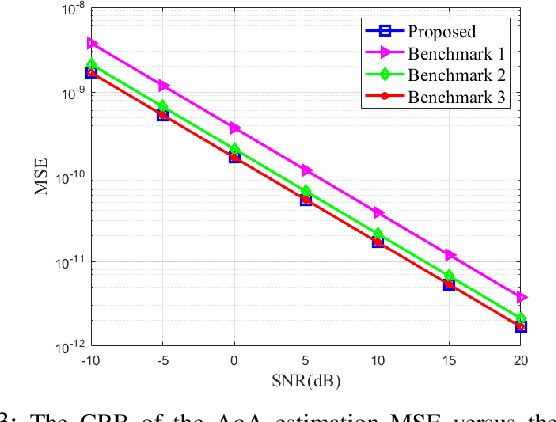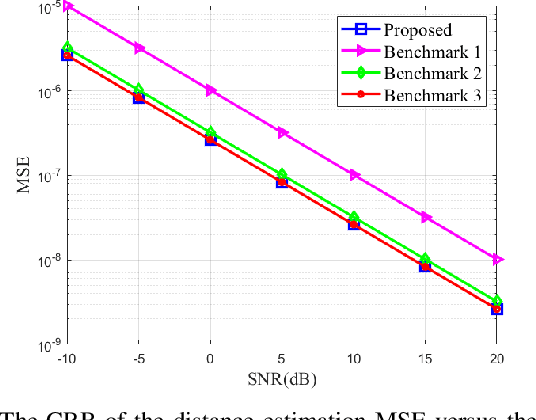Yushen Wang
Antenna Position Optimization for Movable Antenna-Empowered Near-Field Sensing
Feb 05, 2025



Abstract:Movable antennas (MAs) show great promise for enhancing the sensing capabilities of future sixth-generation (6G) networks. With the growing prevalence of near-field propagation at ultra-high frequencies, this paper focuses on the application of MAs for near-field sensing to jointly estimate the angle and distance information of a target. First, to gain essential insights into MA-enhanced near-field sensing, we investigate two simplified cases with only the spatial angle-of-arrival (AoA) or distance estimation, respectively, assuming that the other information is already known. We derive the worst-case Cramer-Rao bounds (CRBs) on the mean square errors (MSEs) of the AoA estimation and the distance estimation via the multiple signal classification (MUSIC) algorithm in these two cases. Then, we jointly optimize the positions of the MAs within a linear array to minimize these CRBs and derive their closed-form solutions, which yield an identical array geometry to MA-aided far-field sensing. Furthermore, we proceed to the more challenging case with the joint AoA and distance estimation and derive the worst-case CRB under the two-dimensional (2D) MUSIC algorithm. The corresponding CRB minimization problem is efficiently solved by adopting a discrete sampling-based approach. Numerical results demonstrate that the proposed MA-enhanced near-field sensing significantly outperforms conventional sensing with fixed-position antennas (FPAs). Moreover, the joint angle and distance estimation results in a different array geometry from that in the individual estimation of angle or distance.
 Add to Chrome
Add to Chrome Add to Firefox
Add to Firefox Add to Edge
Add to Edge